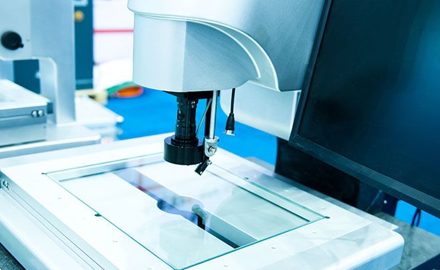The pathology workforce
What is the role of pathologists? Pathologists and pathology staff work across hospitals and communities to prevent, diagnose, treat and monitor disease - helping people stay as healthy as possible.
Demand for pathology services is rising faster than the supply of trained pathologists. The workforce faces mounting pressure from rising workload, increasing complexity and persistent staff vacancies. Chronic workforce shortages across all areas threaten patient safety and service delivery.
Aligned with the RCPath Workforce Strategy 2025–2028, action is needed to train more pathologists, retain existing staff and reform service models. Contingency measures must also ensure that patient care remains a priority by using the current workforce most efficiently.
Investment is essential – both in expanding core pathology workforce capacity and in modernising pathology services through innovation and technology.
Pathology workforce challenges
The RCPath 2025 Workforce Census highlights significant UK-wide challenges for the pathology workforce across all 17 specialties.
Ageing workforce and retirement intentions
The pathology workforce is ageing. Retaining experienced pathologists is critical – they deliver high-quality care, train future pathologists, and shape service development. Without targeted retention efforts, the pathology workforce risks losing vital expertise at a time of growing demand.
- The average intended pathology retirement age is 63.
- Nearly half (47%) of pathologists are aged 50 or over, raising concerns about a potential wave of retirements within the next decade.
- Many pathologists over 55 may leave well before the expected retirement age, further straining services – 23% report that they now plan to retire earlier than planned.
Workload and staffing pressures
Staffing across pathology specialties has not kept pace with rising demand. There are too few doctors in training to fill current vacancies or replace consultants nearing retirement.
- 78% of pathologists believe current staffing levels are insufficient to ensure long-term service stability or meet growing demand.
- 60% of consultants regularly work beyond contracted hours, with unpaid overtime ("goodwill") being the most common way (39%) to manage excess clinical demand.
- Excessive workload (50%) and administrative burden (44%) are the top factors negatively affecting wellbeing.
- Over a third of pathologists report insufficient time for professional development or contributing to service improvement.
Morale and wellbeing
Morale and wellbeing are essential for staff retention, job satisfaction, and patient safety. However, our census shows declining satisfaction and rising stress across the pathology workforce.
- 38% of pathologists report decreased job satisfaction over the past year; only 15% saw an improvement.
- 47% always or often feel stressed at work
- 54% say they lack sufficient time to complete their daily tasks, with excessive workload cited by half as a key factor affecting wellbeing.
- Pathologists feel more supported within their departments (68%) than by their wider organisations (29%).
Increased demand and complexity
Demand for pathology services is growing rapidly – both in volume and complexity.
Cancer incidence is projected to rise by 2% by 2040, and there could be over 500,000 new cases of all cancers combined every year in the UK by 2038-2040.1 The NHS’s intention to implement a national cancer plan requires urgent investment in pathology staffing – not just in histopathology, but also haematology and other specialties – to support cancer backlog, reduce waiting times and focus on prevention.
The expansion of bowel cancer screening by offering screening to those aged 50 – 74 with Faecal Immunochemical Test (FIT) testing has increased clinical biochemistry and histopathology workloads - both as a result of increased initial testing and because positive results lead to further testing. Despite this, workforce has not increased.
Surgical pathology has become more complex due to advances in molecular diagnostics and personalised medicine. Pathologists also play an increasingly vital role in infection control, disease prevention, and antibiotic stewardship.
As care shifts to community settings, pathology is essential for diagnosis and treatment in GP practices and homes. The rise in demand for screening and diagnostic tests, as well as self-testing and direct-to-patient results requires robust, requires well-governed laboratory practices and pathologist involvement in developing, validating and verifying new testing modalities and technologies.
Quality of infrastructure and support
High-quality equipment, resources, and facilities are essential for pathologists to work effectively and safely.
36% of pathologists feel they have adequate resources to manage the administrative aspects of their role. Just 40% agree that their employer provides facilities that enable them to do their job effectively, with outdated IT and infrastructure frequently cited as barriers to productivity.
Digital advancement
Digital pathology offers major benefits, but rollout across the UK has been inconsistent.
Whole slide imaging allows histopathology slides to be reviewed digitally, enabling remote reporting, second opinions, and improved training. While adoption is growing, most labs still lack full implementation.
To expand digital pathology, investment is needed to build on NHS-funded centres of excellence, which can support wider rollout by sharing standards and expertise.
AI and digital tools could enhance efficiency, automate routine tasks, and improve turnaround times. However, progress is hindered by outdated IT systems, poor infrastructure, limited space, and lack of time and resources for implementation and training.
Significant investment is essential to realise the full potential of digital and AI technologies in pathology.
Our work in this area
Supporting the pathology workforce
Pathology relies on a well-qualified, well-resourced and diverse range of medical, scientific and other health professional roles working together as an integrated team to minimise the impact of workforce shortages and deliver high-quality care.
Through its varying programmes, the College supports pathologists to deliver efficient screening, diagnosis, treatment and monitoring across care pathways.
We continue to advocate for urgent action from NHS leaders and governments across all 4 nations, pushing for a coordinated, well-resourced approach to workforce development – aligned with our key themes of train, retain, reform and contingency.
Workforce Strategy and Workforce Planning
As part of our Workforce Strategy 2025–2029, our priority is improving data collection to gain accurate, actionable insights into workforce and workload trends.
Pathology has historically lacked formal workforce planning. Robust data is now essential to inform evidence-based decisions and address the workforce crisis.
Using this data, we aim to contribute meaningfully to national efforts to expand and stabilise the pathology workforce – ensuring services have the resources needed to deliver safe, high-quality care.
Our goal is a sustainable, future-ready pathology workforce equipped to meet growing demand.
References
1. Cancer Research UK, Cancer incidence statistics | Cancer Research UK
Also on the agenda


